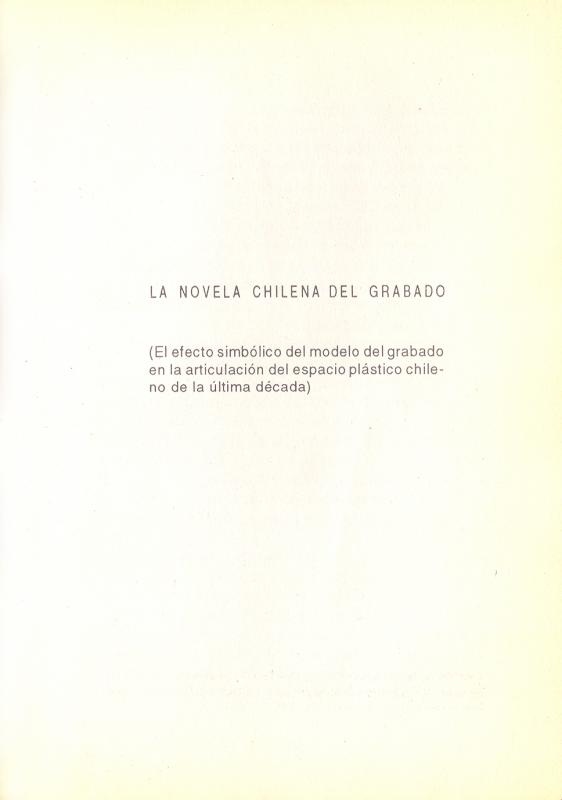“La disputa de la cita bíblica,” written by the curator and art critic Justo Pastor Mellado (b. 1949), is a review of Fábula de la pintura chilena, an exhibition of works by the painter Juan Domingo Dávila (b. 1946) at the Galería Sur (Santiago, 1983). Here, Mellado explains where he “differs” with what the essayist and cultural critic Nelly Richard had written about Dávila [see, in the ICAA Digital Archive, “Return to the pleasurable” (doc. no. 743686), a chapter from her book Margins and Institutions. Art in Chile since 1973 (1986)], in which she reviews Chilean painting while discussing the artists that Mellado mentions in this text. [On the subject of the Escena de Avanzada, see the book’s “Introduction” (doc. no. 738523)]. Richard also contributed to this catalogue with the essay “Cuerpo sin alma” (doc. no. 730158).
Dávila’s work challenges painting with cultural quotes that can obliterate the concept of “author” by interweaving images taken from dissimilar sources that reveal their codes and the effects of their modus operandi. He populates his compositions with references from art history, comics, magazines, historical characters, and popular culture. He also uses obscenity and homosexuality for critical purposes, relying on an unconventional representation of human bodies to express his views on generic sex issues. [See, in the ICAA Digital Archive, the text by Dávila “La regresión de la situación cultural” (doc. no.731457).]
After the coup d’état in Chile in 1973, Dávila moved to Australia and settled in Melbourne. But he kept in touch with the art community back home, mainly through his work with Nelly Richard. The book La cita amorosa (Love in Quotes, 1985) consisted of a theoretical-critical conversation between them (based on his work), in which Richard outlined a conceptual approach to a complex proposal that was destabilizing despite its endorsement of painting at a time when “dematerialized” experimental practices were all the rage in the Chilean art scene.
It should be noted that, in this text, Mellado uses a couple of concepts (“pictorial transfer” and “theoretical transfer”) that were key themes in his book La novela chilena del grabado (1995). In that book, he discusses Chilean painting with a focus on artists such as José Balmes (1927–2016), Eugenio Dittborn (b. 1943), and Gonzalo Díaz (b. 1947), to name a few, and explains the vital role that printmaking played in challenging the country’s painting tradition [see “La novela chilena del grabado” (doc. no. 736035)].





